We now resume your regular programming
I'll explain the pun later
With travel now allowed within Wales, and places starting to open up, we can now go out and visit castles and suchlike again. Cadw, the Welsh historic monuments service, are starting to open up a number of their sites to carefully-controlled numbers of prebooked visitors at sites where it’s feasible. You can’t see the fantastic Victorian Gothic interiors of Castell Coch, but you can go and visit many of the famous castle ruins of Wales, the most famous being the “Edwardian subjugation” castles of the North. Caernarfon or Conwy are a bit far for a day trip from here, though. Instead, we set out for somewhere a bit more local, and walked through the complex arched gateways of Castell Rhaglan, Raglan Castle.

Raglan covers a large area but is rather unusual in that its keep is a moated hexagonal tower outside the main castle bailey, with a high-level bridge linking the two—in fact, in the Tudor period, it might even have been a bi-level bridge. The various levels and arches give you fantasically complex views that are almost like the works of Piranesi.


Raglan was still a sumptuous residence all through the Tudor period, right up until the Civil War. In the Stuart period, it even had a fountain powered by some form of steam engine, which must have predated the machines of Papin or of Savery. The upshot of this today is that, compared to the castles of North Wales I mentioned earlier, it has parts of rather more modern construction. There are substantial chunks rebuilt in brick, for example; finely-detailed stone carvings; and rooms with large rectangular windows. Nevertheless, it is still a ruin: in the Civil War its aristocratic owners naturally supported the King’s side, and as a result the castle surrendered to General Fairfax in the summer of 1646. The castle was made uninhabitable, and sadly, its library destroyed. It still today has no roof to speak of, few floors, and many stone stairs leading nowhere.
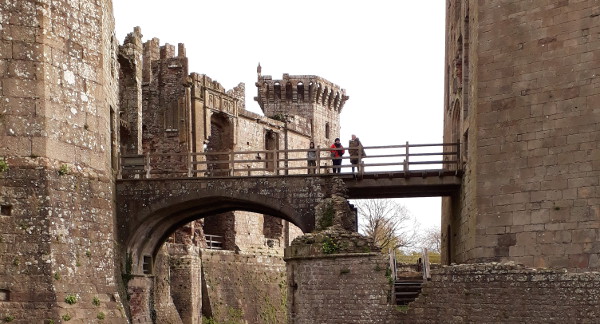
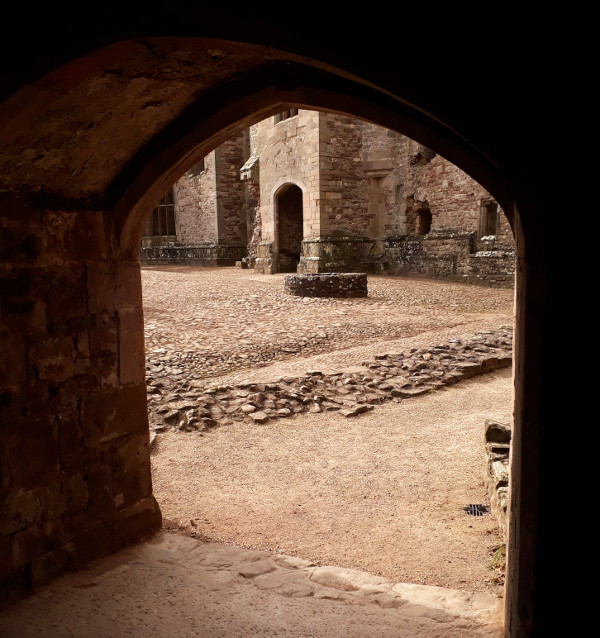
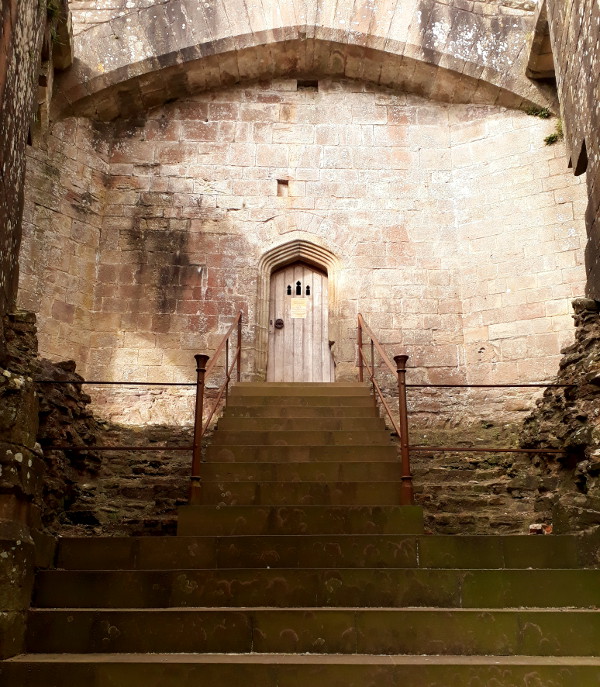
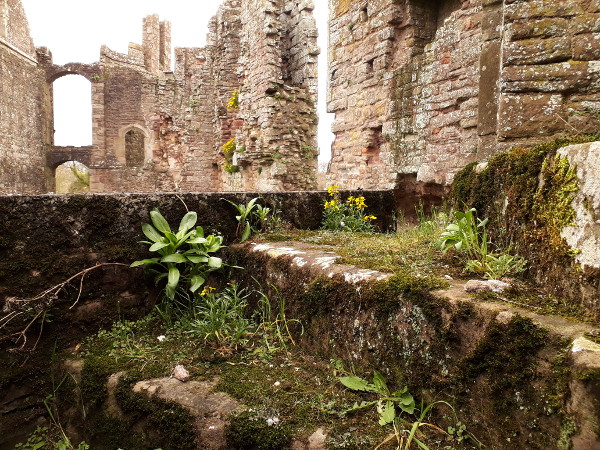
In the Tudor and Stuart periods the castle was surrounded by several terraces of formal gardens, which also no longer survive. Indeed, even if the castle had survived the Civil War, the gardens would no doubt have been lost to changes in aristocratic taste in any case; very few Tudor houses have had their original gardens survive continuously. The castle today is surrounded by the rough, rounded-off and grassed-over remains of the terraces, scattered with picnic benches, and with a shed and a Nissen hut tucked away in a discreet corner. Nevertheless, you can still look out from the castle across the rolling farmland that surrounds it, over to the Blorenge and the Sugar Loaf on the horizon.
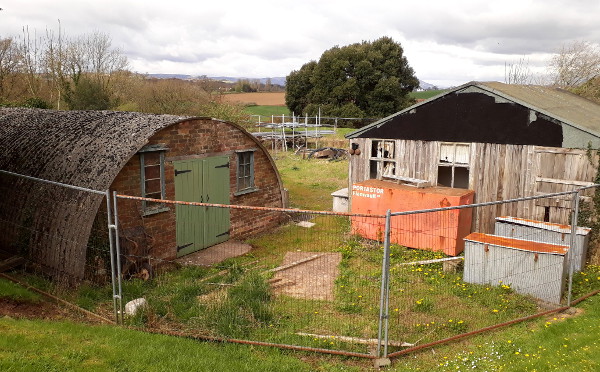
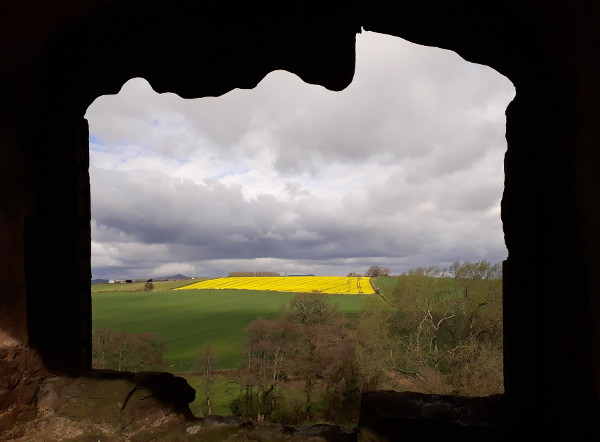
I must go back again some time with the Proper Camera, to take a photo which shows the Sugar Loaf as clearly as it stands out to the naked eye. Moreover, if the Sugar Loaf disappeared from sight, as it did when we were there, you know it’s time to seek shelter before the weather reaches you.
Incidentally, if you read the subtitle at the top of this post, you might still be wondering where the pun is. It’s not a very good one, but it is a bilingual one. My Welsh vocabulary is slowly improving; and all day, I had the same thought going around in my head, that if I was commissioning shows at a Welsh TV station I’d have one every day called “The Raglan Programme”, just because its title would be Y Rhaglen Rhaglan. I’ve done better, I have to admit.

 Home
Home